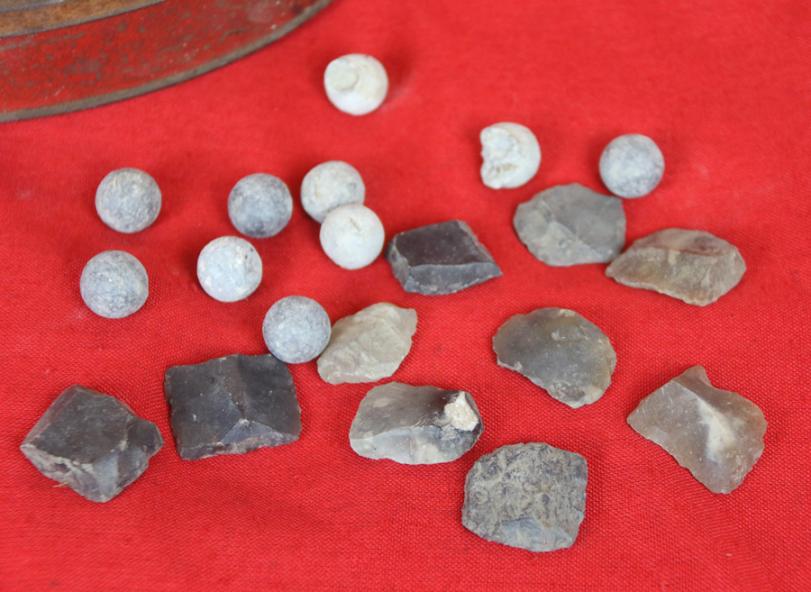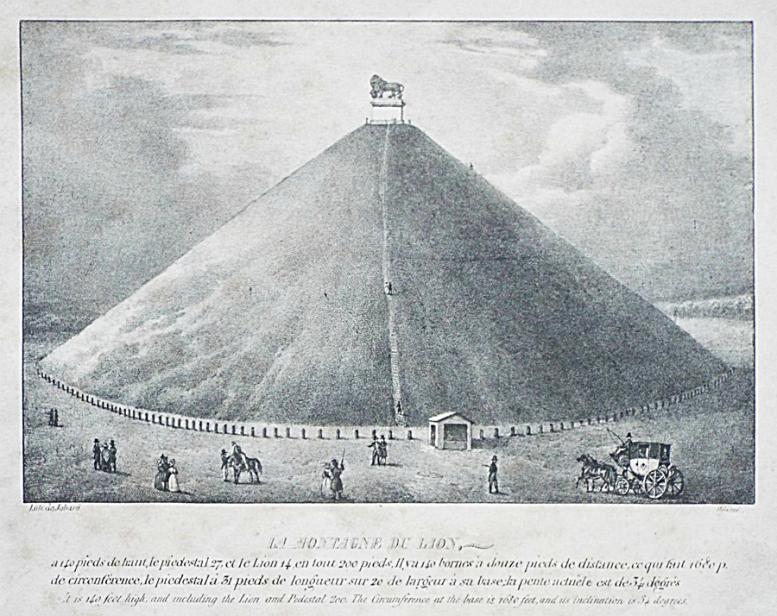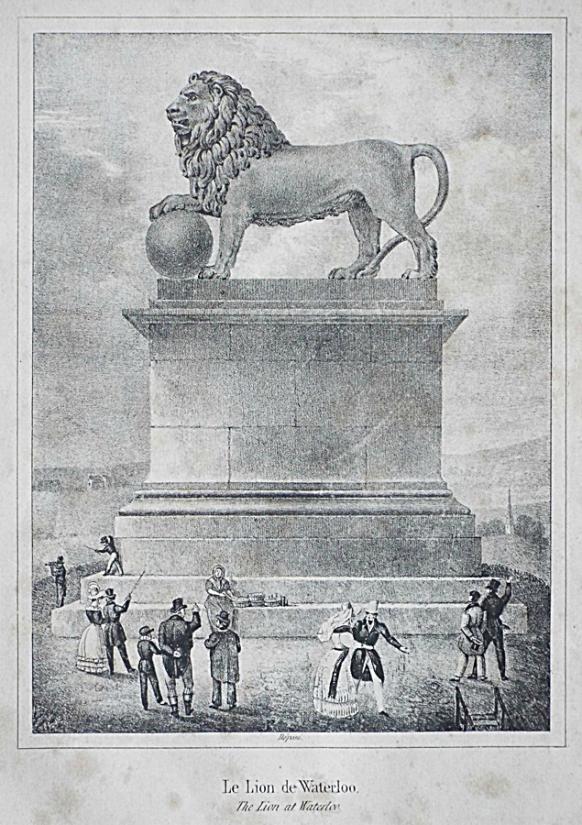A ‘Special Offer’ Pair, A Single Fired Musket Ball & Single Musket Flint From The Waterloo Battlefield Site During the Construction of the Waterloo Mound in the 1820’s
From the field of the 1815 Battle of Waterloo, during a Grand Tour at the building of the Waterloo mound, a huge lion monument at the battle site of Waterloo, in honour of the Prince of Orange. A collection 20 assorted musket flints and pistol and musket balls recovered from Waterloo, offered by us as a matched pair of one ball and one flint at a time. Originally purchased by the nobility from the peasant excavators in Belgium, while building the Prince of Orange's Waterloo Mound at the battlefield in the 1820's, and acquired by us from their descendants as a collection of 20. From part of our antiquities and curiosities acquired from a circa 1820's Grand Tour classical collection from Europe and the Middle East. Such as Agincout, Poitiers, Crecy, Waterloo, Philippi, and following Alexander's campaign trail of his conquests then part of the Ottoman Empire. We have been purchasing piecemeal from the same family for around 20 years, military items and artefacts from the family's forebears Grand Tour in the early 19th century.
We are offering them as two fabulous souvenirs of the famous Duke of Wellington's victory over France and Napoleon, a matched pair, one flint and one ball.
The Battle of Waterloo was fought on Sunday, 18 June 1815, near Waterloo in Belgium, part of the United Kingdom of the Netherlands at the time. A French army under the command of Napoleon Bonaparte was defeated by two of the armies of the Seventh Coalition, a British-led coalition consisting of units from the United Kingdom, the Netherlands, Hanover, Brunswick, and Nassau, under the command of the Duke of Wellington, referred to by many authors as the Anglo-allied army or Wellington's army, and a Prussian army under the command of Field Marshal von Blücher, referred to also as Blücher's army. The battle marked the end of the Napoleonic Wars. The battle was contemporaneously known as the Battle of Mont Saint-Jean or La Belle Alliance (the beautiful alliance).
Waterloo was the decisive engagement of the Waterloo Campaign and Napoleon's last. According to Wellington, the battle was "the nearest-run thing you ever saw in your life". Napoleon abdicated four days later, and coalition forces entered Paris on 7 July. The defeat at Waterloo ended Napoleon's rule as Emperor of the French and marked the end of his Hundred Days return from exile. This ended the First French Empire and set a chronological milestone between serial European wars and decades of relative peace, often referred to as the Pax Britannica. The battlefield is located in the Belgian municipalities of Braine-l'Alleud and Lasne, about 15 kilometres (9.3 mi) south of Brussels, and about 2 kilometres (1.2 mi) from the town of Waterloo. The site of the battlefield today is dominated by the monument of the Lion's Mound, a large artificial hill constructed from earth taken from the battlefield itself; the topography of the battlefield near the mound has not been preserved. Photo is of ten of our twelve pairs
THE HOME OF ORIGINAL AND AFFORDABLE ANCIENT ANTIQUITIES & ANTIQUE COLLECTABLES IN BRITAIN.
The Lanes Armoury, world renown as Britain's favourite specialist collectors shop, and also a font of historical and educational information that is detailed with every single item. We detail each piece alongside its historical context, either generic or specific, for those that may wish to read, learn, or be informed, as opposed to simply acquire collectable items. It is probably one of the oldest companies of our kind in the whole of Europe and we have been established through generations, as specialists in armoury antiques, militaria collectables, and specialist books, since the early 1900’s, and thus we have continued to be one of the largest in the world today. We are also very pleased to know we are also studied and read by academics and students from hundreds of universities around the world, by those that are interested in not only British but worldwide history.
For this reason we also like to be known as a learning and researching website.
Everyday we are contacted by historians that wish to make contributions to our detailed information for our pieces, and to thus add to our constant dedication to impart historical knowledge, that may be unknown to many of our millions of viewers.
As with all our items it comes complete with our certificate of authenticity.
Code: 23946
48.00 GBP







